Year 5
Australian communities - their past, present and possible futures
The Year 5 curriculum focuses on colonial Australia in the 1800s and the social, economic, political and environmental causes and effects of Australia's development, and on the relationship between humans and their environment. Students' geographical knowledge of Australia and the the world is expanded as they explore the continents of Europe and North America, and study Australia's colonisation, migration and democracy in the 1800s. Students investigate how the characteristics of environments are influenced by humans in different times and places, as they seek resources, settle in new places and manage the spaces within them. They also investigate how environments influence the characteristics of places where humans live and human activity in those places. Students explore how communities, past and present, have worked together based on shared beliefs and values. The curriculum introduces studies about Australia's democratic values, its electoral system and law enforcement. In studying human desire and need for resources, students make connections to economics and business concepts around decisions and choices, gaining opportunities to consider their own and others' financial, economic, environmental and social responsibilities and decision-making, past, present and future.
The content provides opportunities for students to develop humanities and social sciences understanding through key concepts including significance; continuity and change; cause and effect; place and space; interconnections; roles, rights and responsibilities; and perspectives and action. These concepts may provide a focus for inquiries and be investigated across sub-strands or within a particular sub-strand context.
The content at this year level is organised into two strands: knowledge and understanding, and inquiry and skills. The knowledge and understanding strand draws from four sub-strands: history, geography, civics and citizenship and economics and business. These strands (knowledge and understanding, and inquiry and skills) are interrelated and have been developed to be taught in an integrated way, which may include integrating with content from the sub-strands and from other learning areas, and in ways that are appropriate to specific local contexts. The order and detail in which they are taught are programming decisions.
Inquiry Questions
A framework for developing students' knowledge, understanding and skills is provided by inquiry questions. The following inquiry questions allow for connections to be made across the sub-strands and may be used or adapted to suit local contexts: inquiry questions are also provided for each sub-strand that may enable connections within the humanities and social sciences learning area or across other learning areas.
- How have individuals and groups in the past and present contributed to the development of Australia?
- What is the relationship between environments and my roles as a consumer and citizen?
- How have people enacted their values and perceptions about their community, other people and places, past and present?
(source: www.australiancurriculum.edu.au)
Achievement Standard
By the end of Year 5, students describe the significance of people and events/developments in bringing about change. They identify the causes and effects of change on particular communities and describe aspects of the past that have remained the same. They describe the experiences of different people in the past. Students explain the characteristics of places in different locations at local to national scales. They identify and describe the interconnections between people and the human and environmental characteristics of places, and between components of environments. They identify the effects of these interconnections on the characteristics of places and environments. Students identify the importance of values and processes to Australia's democracy and describe the roles of different people in Australia's legal system. They recognise that choices need to be made when allocating resources. They describe factors that influence their choices as consumers and identify strategies that can be used to inform these choices. They describe different views on how to respond to an issue or challenge.
Students develop questions for an investigation. They locate and collect data and information from a range of sources to answer inquiry questions. They examine sources to determine their purpose and to identify different viewpoints. They interpret data to identify and describe distributions, simple patterns and trends, and to infer relationships, and suggest conclusions based on evidence. Students sequence information about events, the lives of individuals and selected phenomena in chronological order using timelines. They sort, record and represent data in different formats, including large-scale and small-scale maps, using basic conventions. They work with others to generate alternative responses to an issue or challenge and reflect on their learning to independently propose action, describing the possible effects of their proposed action. They present their ideas, findings and conclusions in a range of communication forms using discipline-specific terms and appropriate conventions.
(source: www.australiancurriculum.edu.au)
Achievement Standard
By the end of Year 5, students describe the significance of people and events/developments in bringing about change. They identify the causes and effects of change on particular communities and describe aspects of the past that have remained the same. They describe the experiences of different people in the past.
Students sequence information about events and the lives of individuals in chronological order using timelines. When researching, students develop questions for a historical inquiry. They identify a range of sources and locate, collect and organise information related to this inquiry. They analyse sources to determine their origin and purpose and to identify different viewpoints. Students develop, organise and present their texts, particularly narrative recounts and descriptions, using historical terms and concepts.
(source: www.australiancurriculum.edu.au)
Achievement Standard
By the end of Year 5, students describe the location of selected countries in relative terms. They explain the characteristics of places in different locations at local to national scales. They identify and describe the interconnections between people and the human and environmental characteristics of places, and between components of environments. They identify the effects of these interconnections on the characteristics of places and environments. They identify and describe different possible responses to a geographical challenge.
Students develop appropriate geographical questions for an investigation. They locate, collect and organise data and information from a range of sources to answer inquiry questions. They represent data and the location of places and their characteristics in graphic forms, including large-scale and small-scale maps that use the cartographic conventions of border, scale, legend, title and north point. They describe the location of places and their characteristics using compass direction and distance. Students interpret maps, geographical data and other information to identify and describe spatial distributions, simple patterns and trends, and suggest conclusions. They present findings and ideas using geographical terminology in a range of communication forms. They propose action in response to a geographical challenge and identify the possible effects of their proposed action.
(source: www.australiancurriculum.edu.au)
Achievement Standard
By the end of Year 5, students identify the importance of values and processes to Australia's democracy and describe the roles of different people in Australia's legal system. They identify various ways people can participate effectively in groups to achieve shared goals and describe different views on how to respond to a current issue or challenge.
Students develop questions for an investigation about the society in which they live. They locate and collect information from different sources to answer these questions. They examine sources to determine their purpose and identify different viewpoints. They interpret information to suggest conclusions based on evidence. Students identify possible solutions to an issue as part of a plan for action and reflect on how they work together. They present their ideas, conclusions and viewpoints in a range of communication forms using civics and citizenship terms and concepts.
(source: www.australiancurriculum.edu.au)
Achievement Standard
By the end of Year 5, students distinguish between needs and wants and recognise that choices need to be made when allocating resources. They describe factors that influence their choices as consumers. Students identify individual strategies that can be used to make informed consumer and financial choices.
Students develop questions for an investigation about an economics or business issue or event. They locate and collect data and information from a range of sources to answer these questions. They examine sources to determine their purpose and suggest conclusions based on evidence. They interpret, sort and represent data in different formats. They generate alternative responses to an issue or challenge and reflect on their learning to propose action, describing the possible effects of their decision. Students apply economics and business skills to everyday problems. They present their ideas, findings and conclusions in a range of communication forms using economics and business terms.
(source: www.australiancurriculum.edu.au)
- Plus Plan

The Missing Mona Lisa – Chapter 6: Evidence and Opportunity
The Adventure Agents will begin bringing all the information from the witnesses and evidence together to start forming a picture of what happened on the night the Mona Lisa was stolen.
- Plus Plan
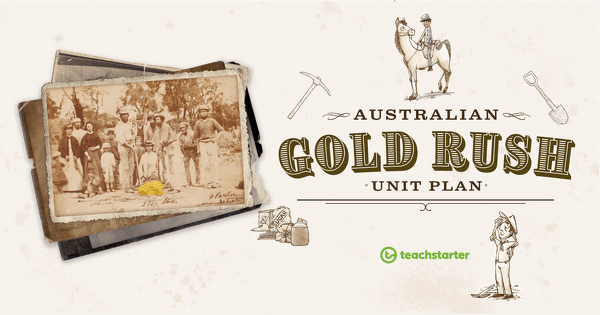
Assessment: Living Wax Museum – Australian Gold Rush
A 60-minute assessment designed to assess students' knowledge and understanding of the people, politics and events of the Australian Gold Rush.
- Plus Plan
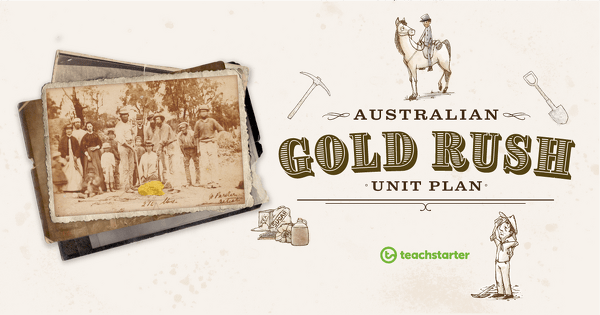
Melting Pot – Exploring the Cultures That Made the Australian Gold Rush
A 60-minute lesson about the influence different cultures had on Australia during the gold rush years, the challenges newcomers faced, and how they made Australia what it is today.
- Plus Plan
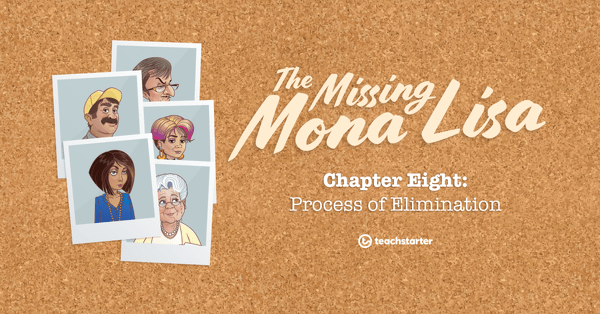
The Missing Mona Lisa – Chapter 8: Process of Elimination
It's getting closer now - the Adventure Agents are closing in of the thief. They now need to write a persuasive piece in order to get a warrant. Time is of the essence!
- Plus Plan
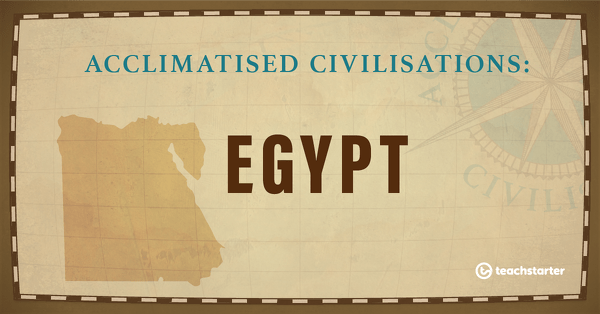
Egypt
A 60-minute lesson in which students learn how people lived in and adapted to the desert environment in Egypt.
- Plus Plan
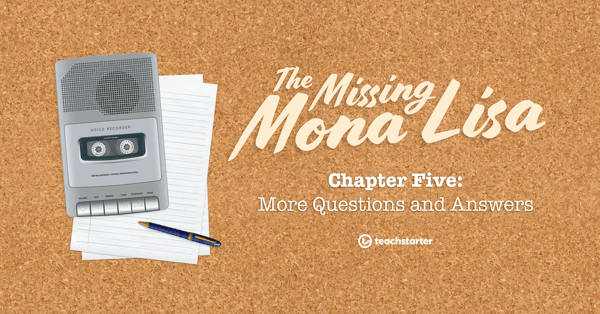
The Missing Mona Lisa – Chapter 5: More Questions and Answers
This chapter provides the Adventure Agents with the two remaining police interview transcripts and an extra very important piece of evidence has just been discovered!
- Plus Plan
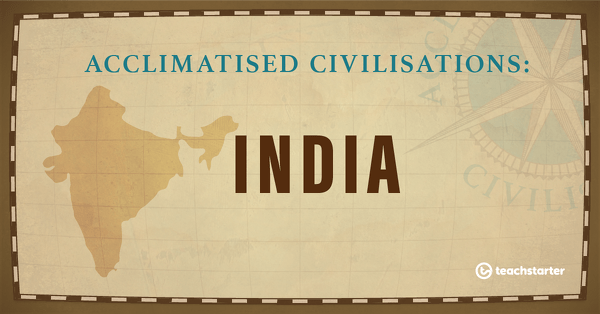
India
A 60-minute lesson in which students learn how people lived in and adapted to the environment in India.
- Plus Plan
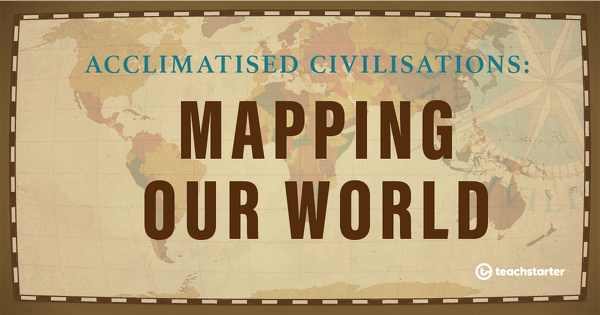
Mapping Our World
A 60-minute lesson in which students revise locating and labelling the main features on the world map.
- Plus Plan
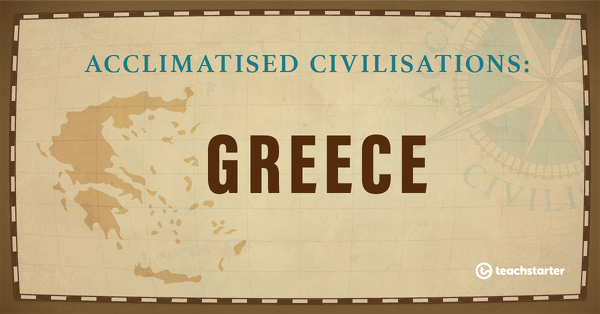
Greece
A 60-minute lesson in which students learn how people lived in and adapted to the Mediterranean environment in Greece.
- Plus Plan
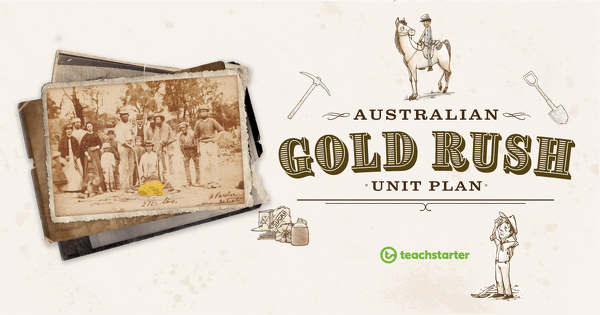
First Nations – Aboriginal and Torres Strait Islander Involvement in the Gold Rush
A 60-minute lesson in which students explore the impact the Australian Gold Rush had on Indigenous peoples.
- Plus Plan
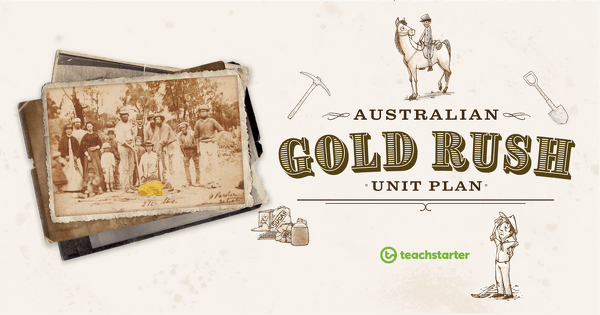
Gold Fever - Kick Starting the Australian Gold Rush
A 60-minute lesson in which students learn about the discovery of gold and initial phases of the Australian Gold Rush.
- Plus Plan
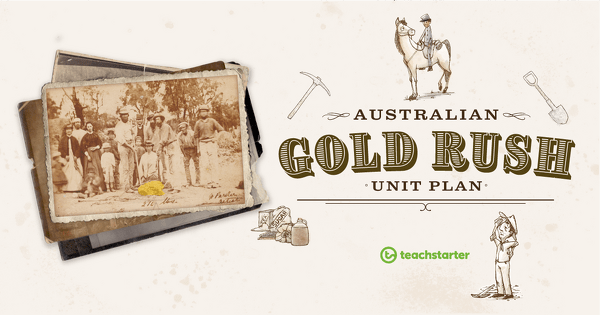
Australian History - Revisiting the Past
A 60-minute lesson in which students recap their prior knowledge of Australian history and the British colonisation of Australia.
- Plus Plan
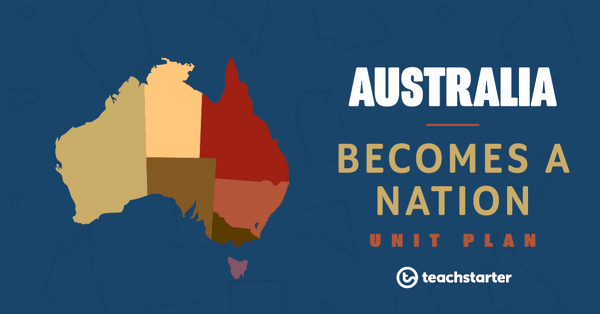
The Establishment of Australia's Colonies
A 60 minute lesson in which students will explore the unique characteristics and history of the six colonies of Australia.
- Plus Plan

The Six Colonies of Australia
A 60 minute lesson in which students will explore the establishment of the six colonies of Australia.
- Plus Plan
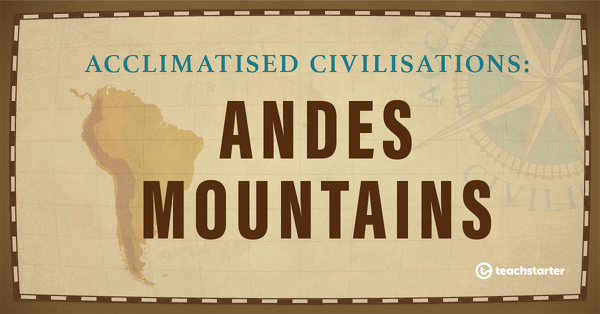
The Andes Mountains
A 60-minute lesson in which students learn how people lived in and adapted to the alpine environment in the Andes Mountains.
- Plus Plan
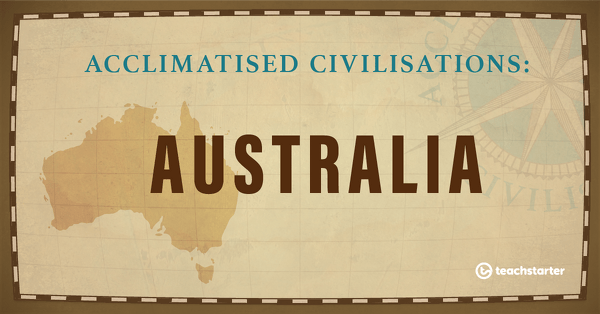
Australia
A 60-minute lesson in which students learn how people lived in and adapted to the environment in Australia.